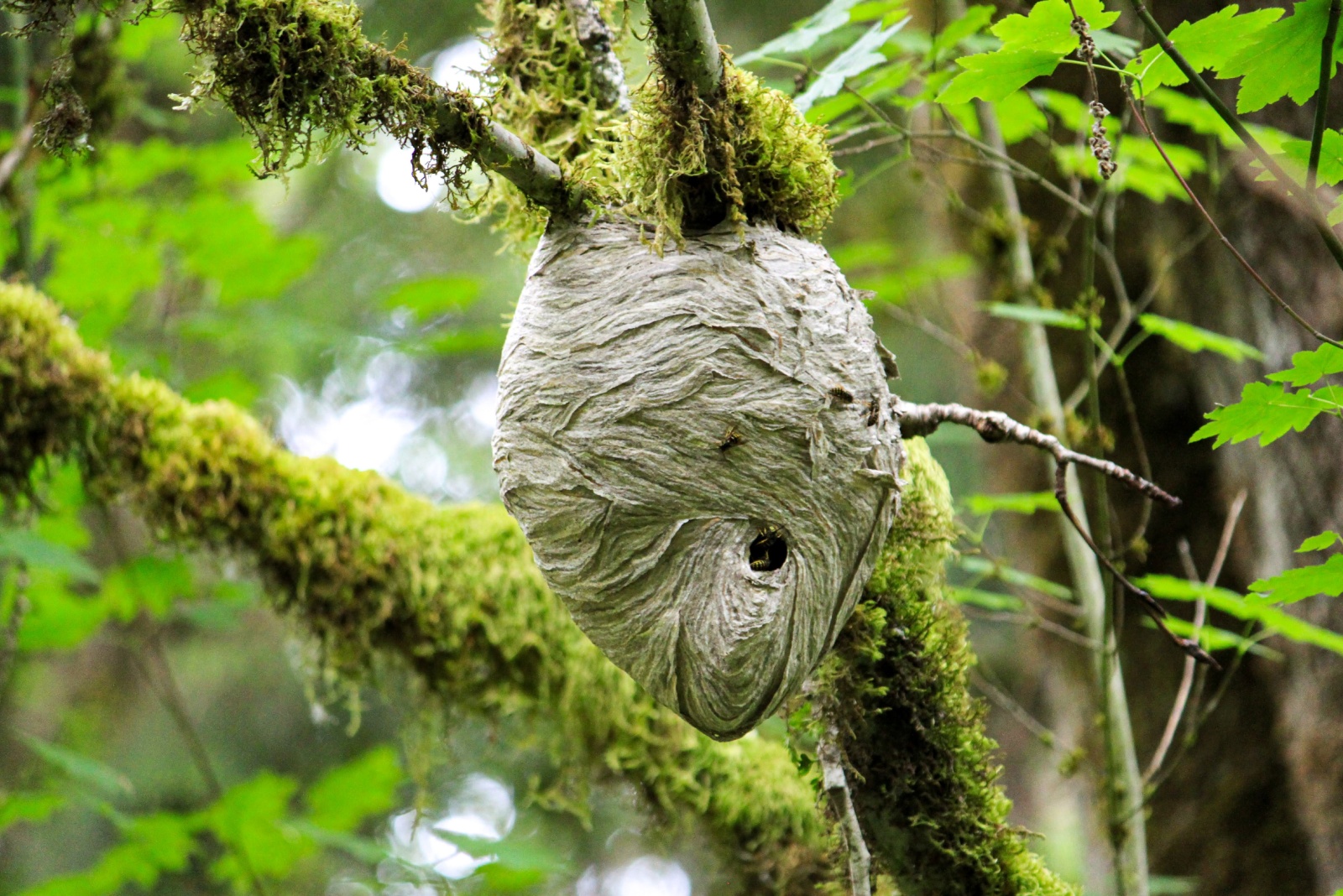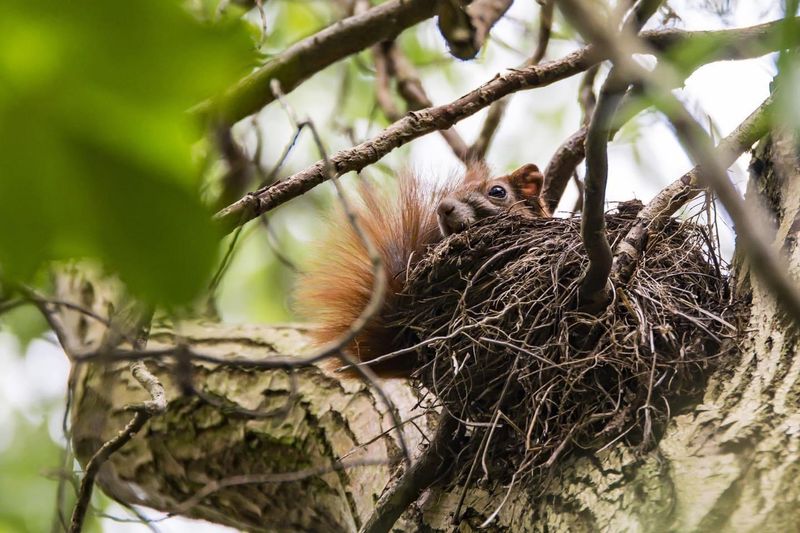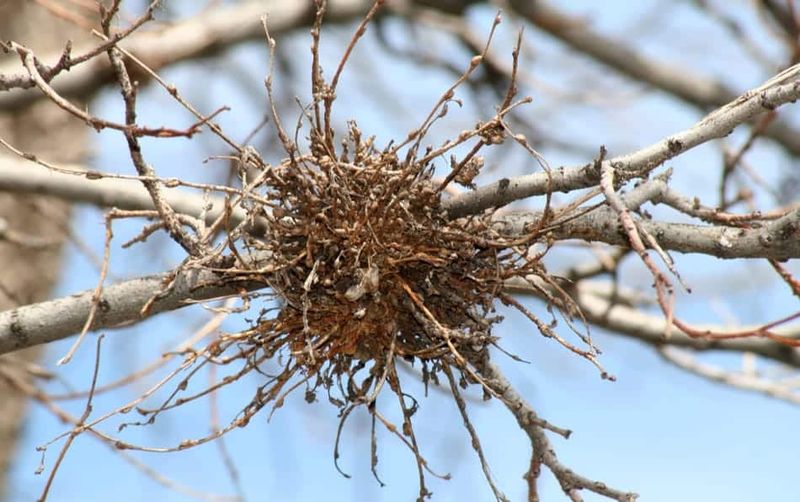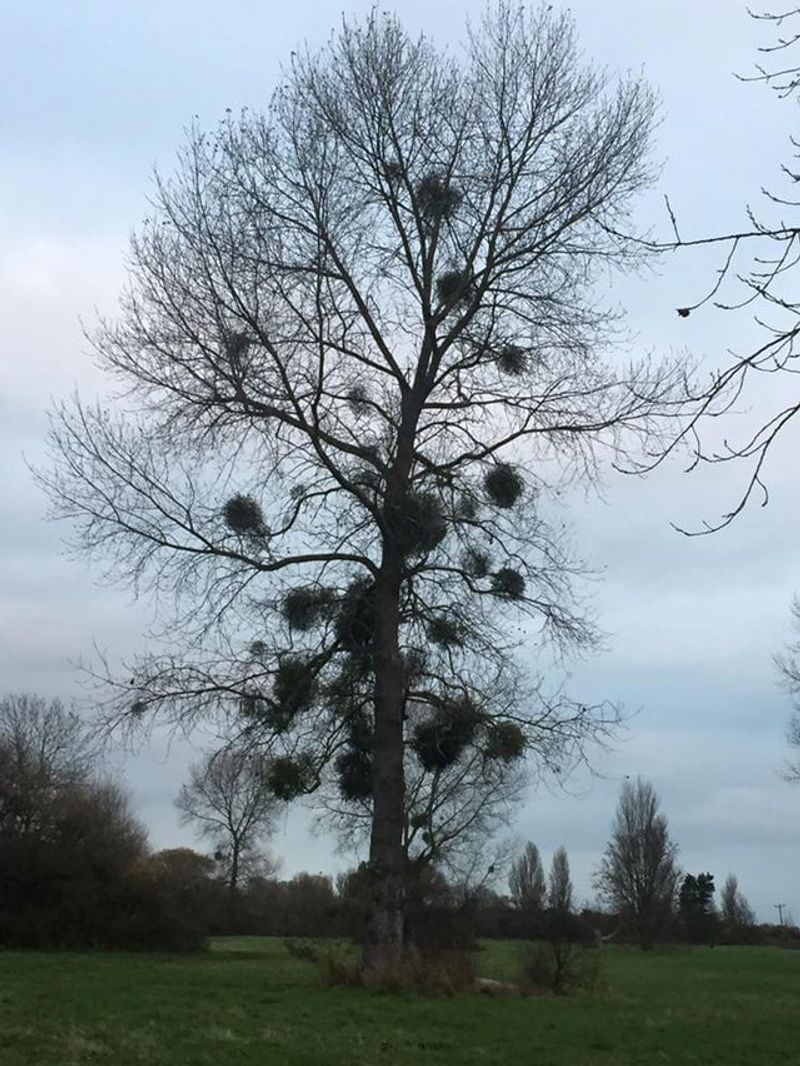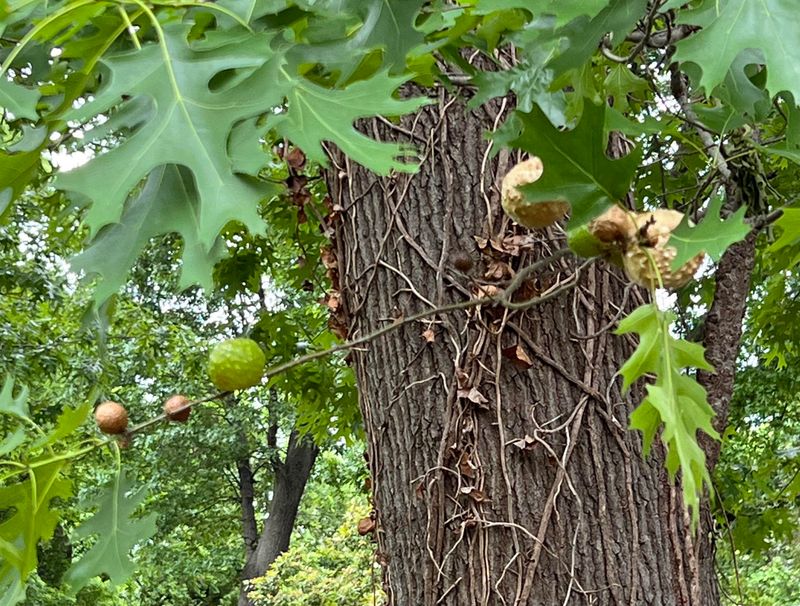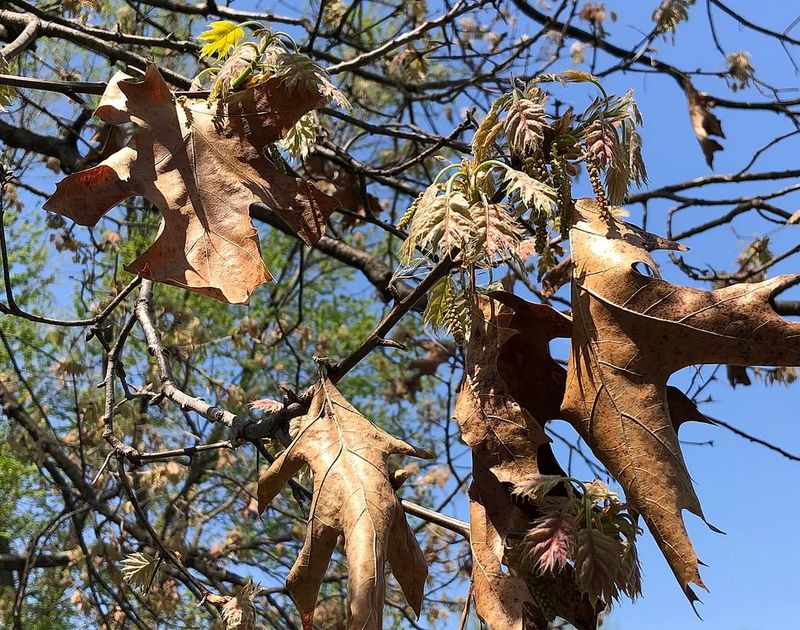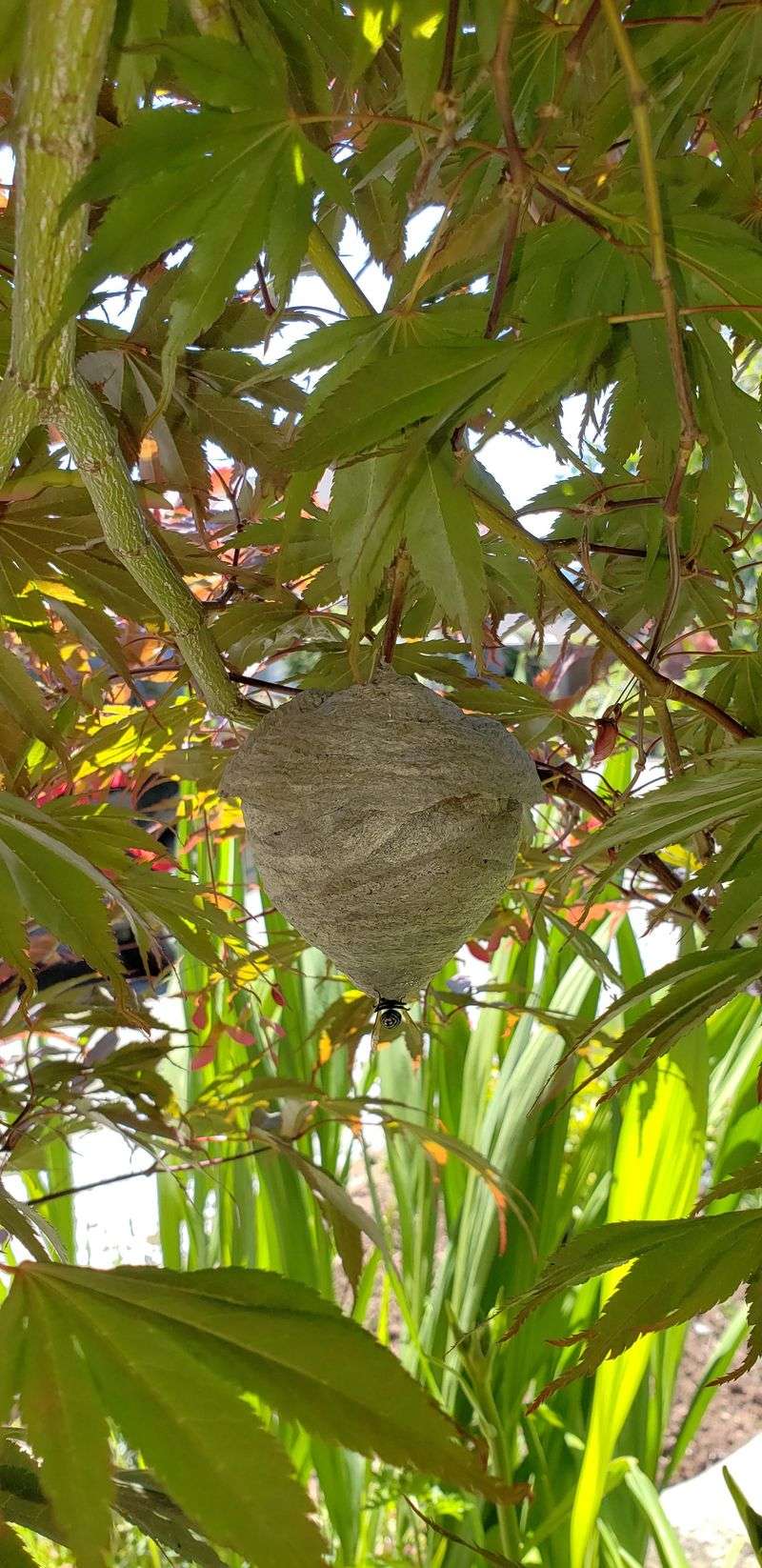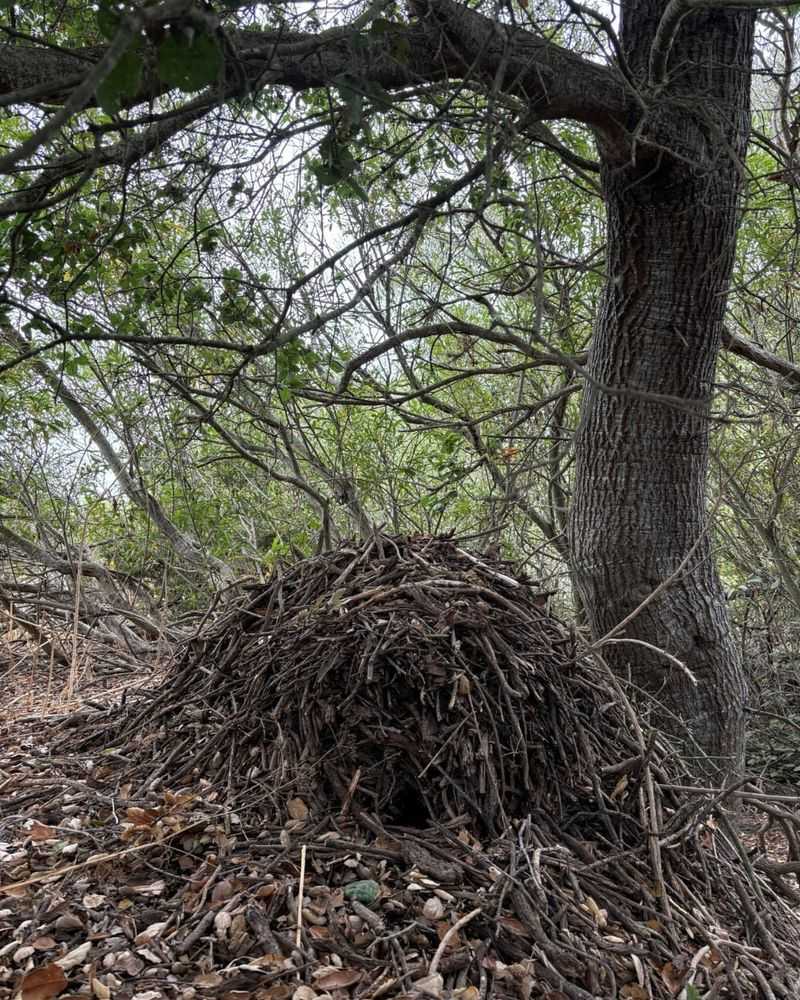Ever notice a big clump of leaves tucked high in a New Mexico tree and assume it’s a bird nest? You’re not alone—it’s a common guess, but not always the right one. Those leafy bundles are often something else entirely, like squirrel dreys or even insect nests.
They might look harmless, but they can tell you a lot about what’s happening in your trees. I’ve found that learning to spot the difference helps you care for your trees more effectively.
Plus, it gives you a deeper appreciation for the wildlife sharing your space. Want help identifying what’s hiding in your trees and whether it needs attention or admiration?
1. Squirrels Build Cozy Dreys
Squirrels are master builders who create leafy homes called dreys. Unlike bird nests, these structures are much larger and rounder, often looking like someone stuffed a basketball with leaves into the branches.
Squirrels weave together twigs, leaves, and moss to form a waterproof shelter. They typically build these cozy homes high up in trees where they feel safe from predators.
If you see a large leaf ball that stays intact through windy days, chances are a furry friend calls it home!
2. Witches Broom Disease Creates Clusters
Sometimes trees develop a weird growth pattern called witches broom. This happens when fungi, insects, or viruses make branches grow in a tangled, bushy clump that resembles a nest from far away.
The branches grow super close together, creating a dense ball shape. Leaves fill in the spaces, making it look even more like something built the structure on purpose.
Check closely and you’ll notice it’s actually part of the tree itself, not something added by wildlife.
3. Mistletoe Bunches Fool Many Eyes
Mistletoe isn’t just for holiday kisses! This parasitic plant grows right into tree branches and forms thick, rounded clumps that people often confuse with nests.
The plant sends roots into the tree to steal water and nutrients. As it grows bigger, mistletoe creates a bushy ball shape that stays green year-round in many cases.
Look for evergreen leaves that don’t match the host tree, and you’ve probably found mistletoe rather than a bird home.
4. Wind Catches Tumbleweeds Overhead
New Mexico winds can be fierce, tossing tumbleweeds into unexpected places. When one gets wedged in tree branches, it settles in and looks surprisingly nest-like from below.
These dried plants are lighter than they appear and catch easily in forked branches. Over time, more debris can collect around them, making the illusion even more convincing.
Tumbleweeds usually have a brownish, dried appearance and lack the tight construction you’d see in an actual nest.
5. Galls Form Strange Tree Growths
Galls are bizarre growths that form when insects lay eggs in tree tissue. The tree reacts by growing extra cells around the intruder, creating odd shapes that can resemble leafy nests.
Different insects create different gall types. Some look like fuzzy balls, while others appear as tight clusters of deformed leaves bunched together on a single branch.
These formations are actually protective bubbles the tree makes, not structures built by animals seeking shelter.
6. Debris Piles Up Naturally
Mother Nature isn’t always tidy! Leaves, twigs, and plant material naturally collect in the crooks of branches where they get stuck during storms or windy weather.
Gravity and wind work together to push loose debris into spots where branches fork. Over weeks and months, these piles grow bigger and more compact, eventually looking intentional.
Random debris piles usually have a messy appearance without the neat, woven pattern you’d find in bird or squirrel nests.
7. Abandoned Wasp Nests Remain
Paper wasps build impressive nests from chewed wood fibers that dry into a papery material. When abandoned and weathered, these gray structures can collect leaves and look confusingly nest-like.
The original wasp construction provides a framework that catches falling leaves. Wind and rain press everything together, creating a convincing disguise over the papery layers underneath.
Look for the characteristic hexagonal cells peeking through if you can safely get close enough to inspect it properly.
8. Packrats Construct Middens Everywhere
Packrats, also called woodrats, are famous hoarders who build elaborate homes called middens. While typically ground-based, these resourceful rodents sometimes choose tree locations for their messy constructions.
They gather anything they find interesting including sticks, leaves, cactus pieces, and even shiny objects. The result is a jumbled pile that lacks the neat, rounded shape of squirrel dreys.
Packrat nests often have a distinctive musky smell and may include unusual items mixed with natural materials.

